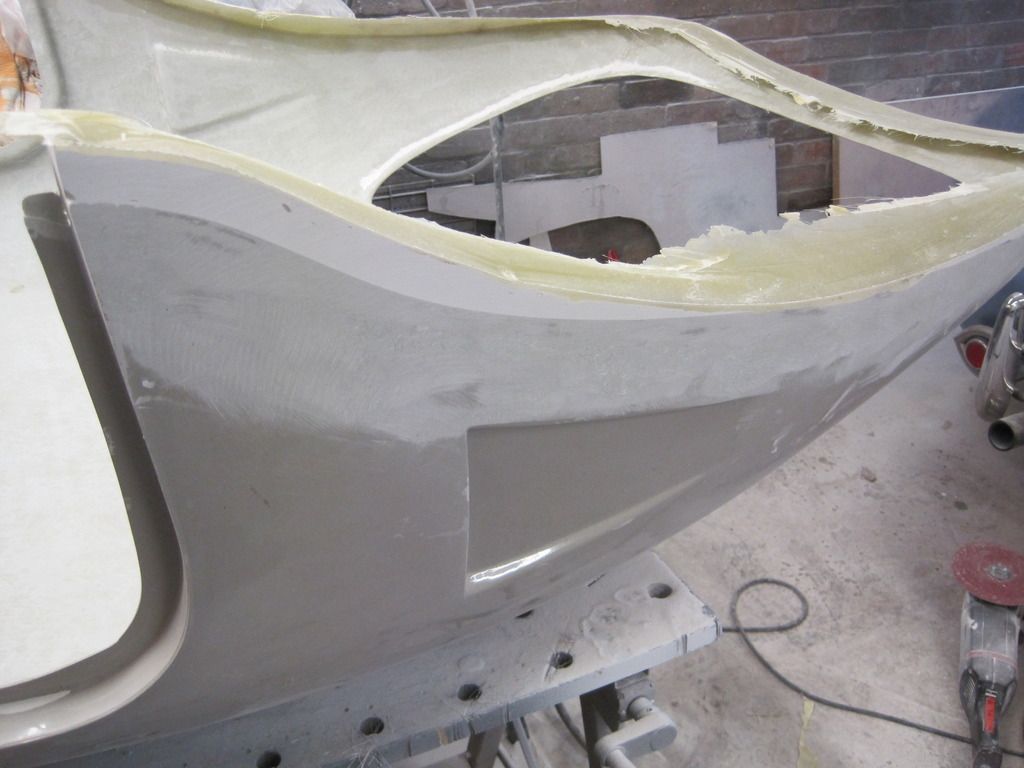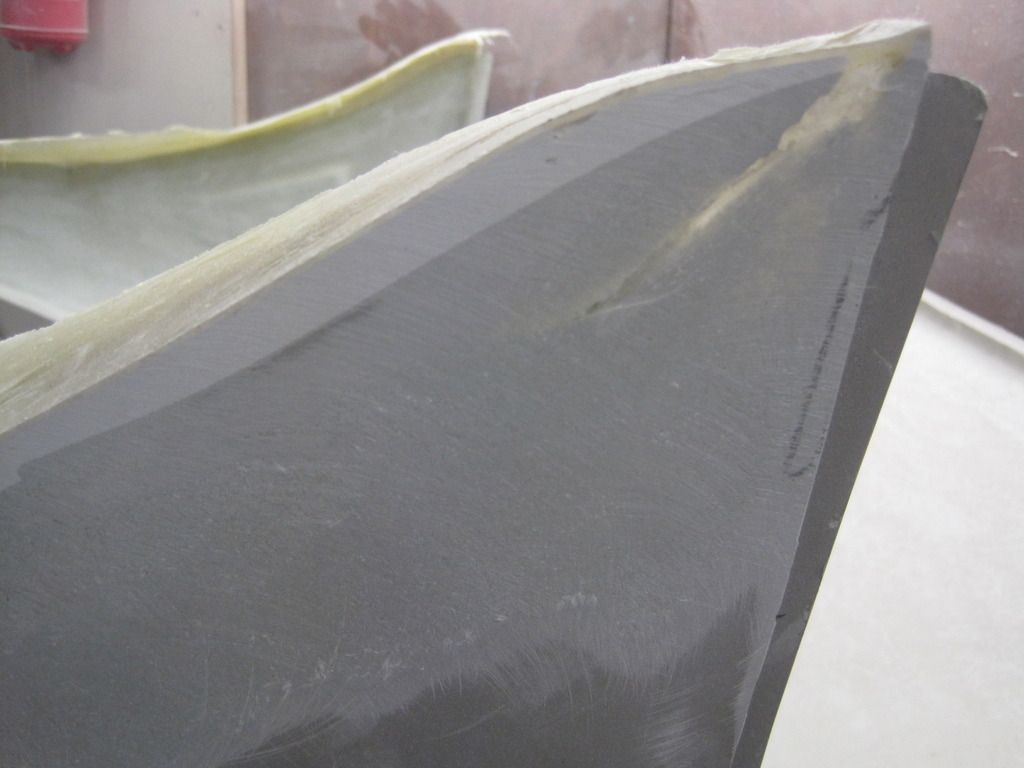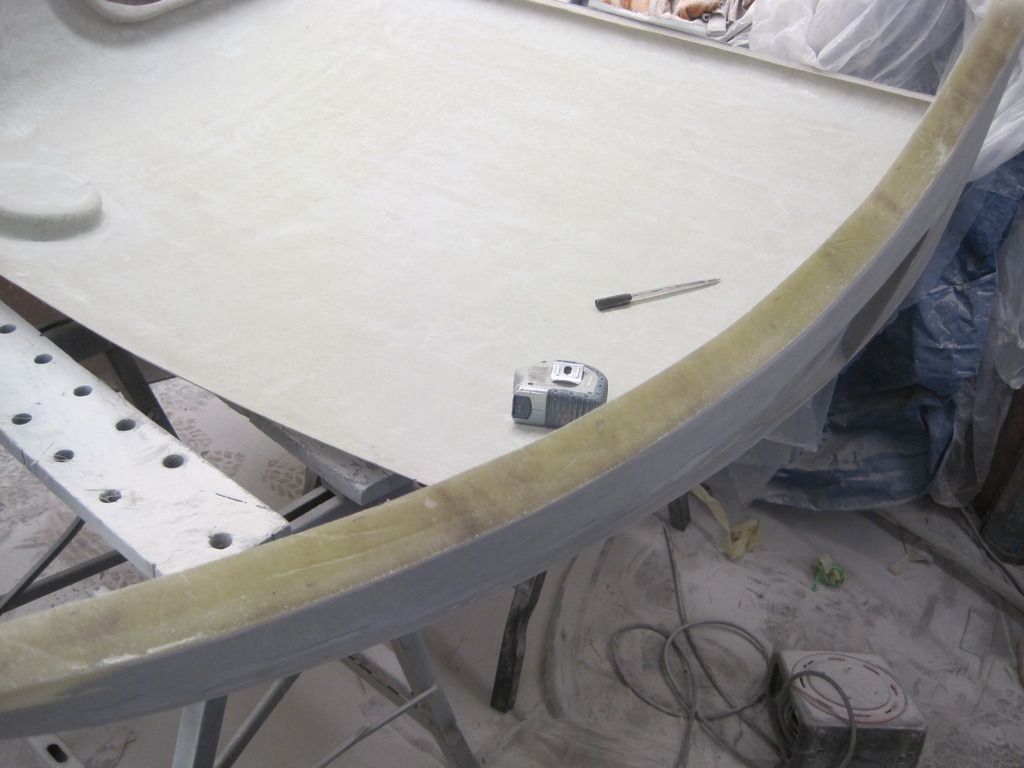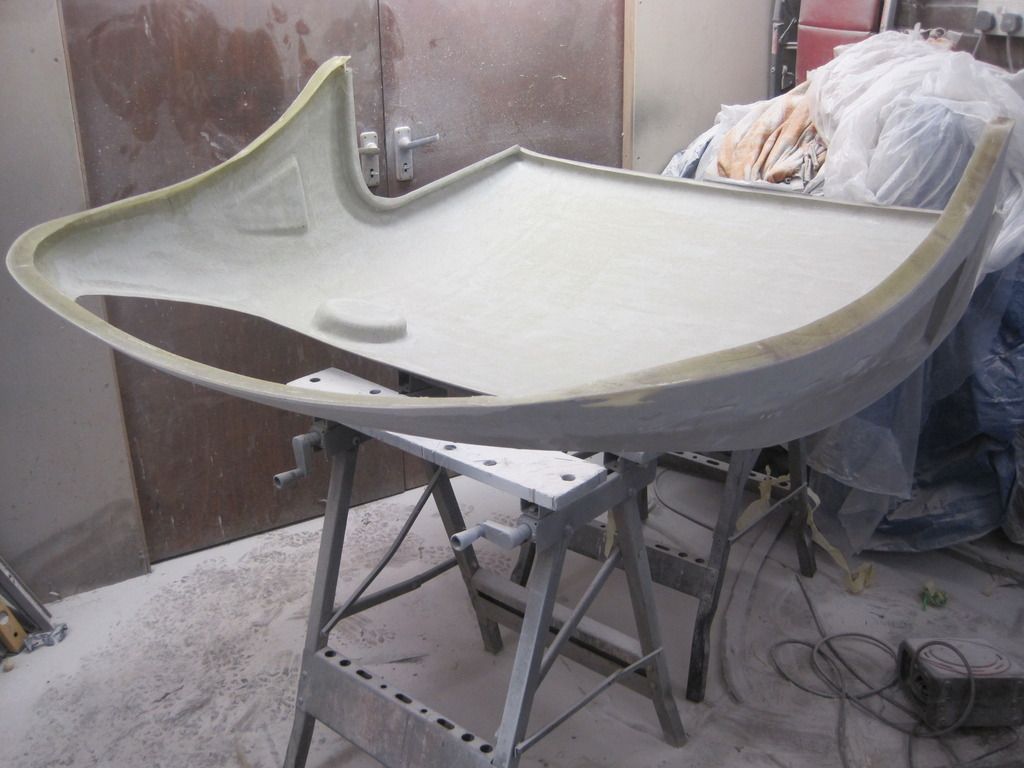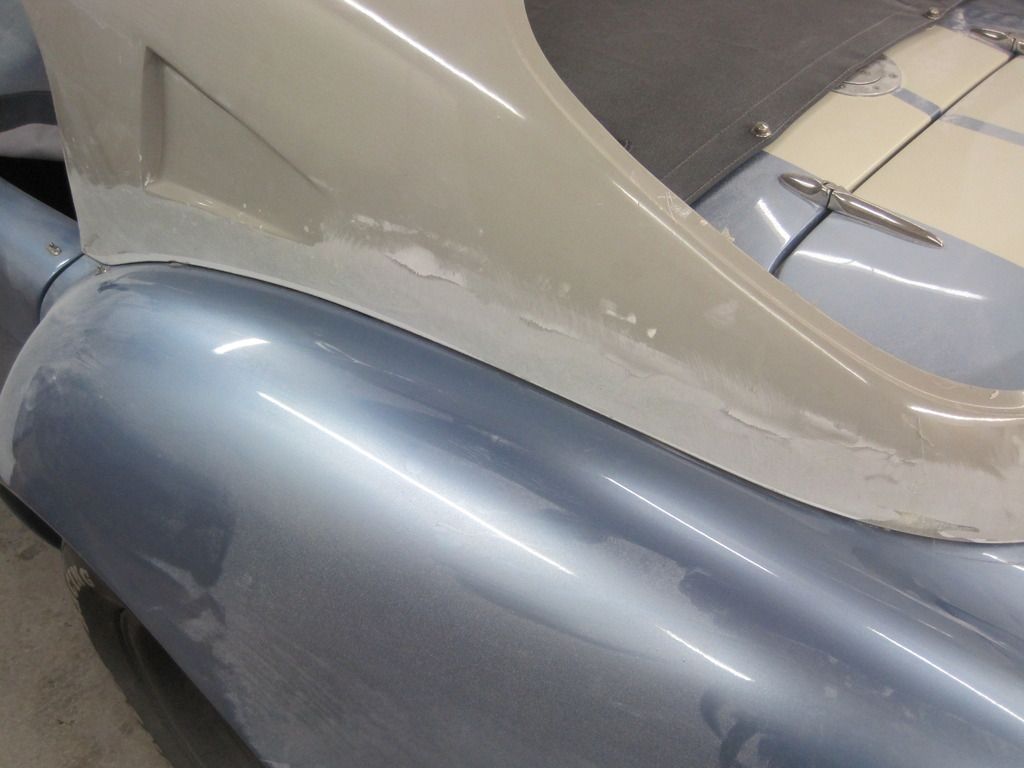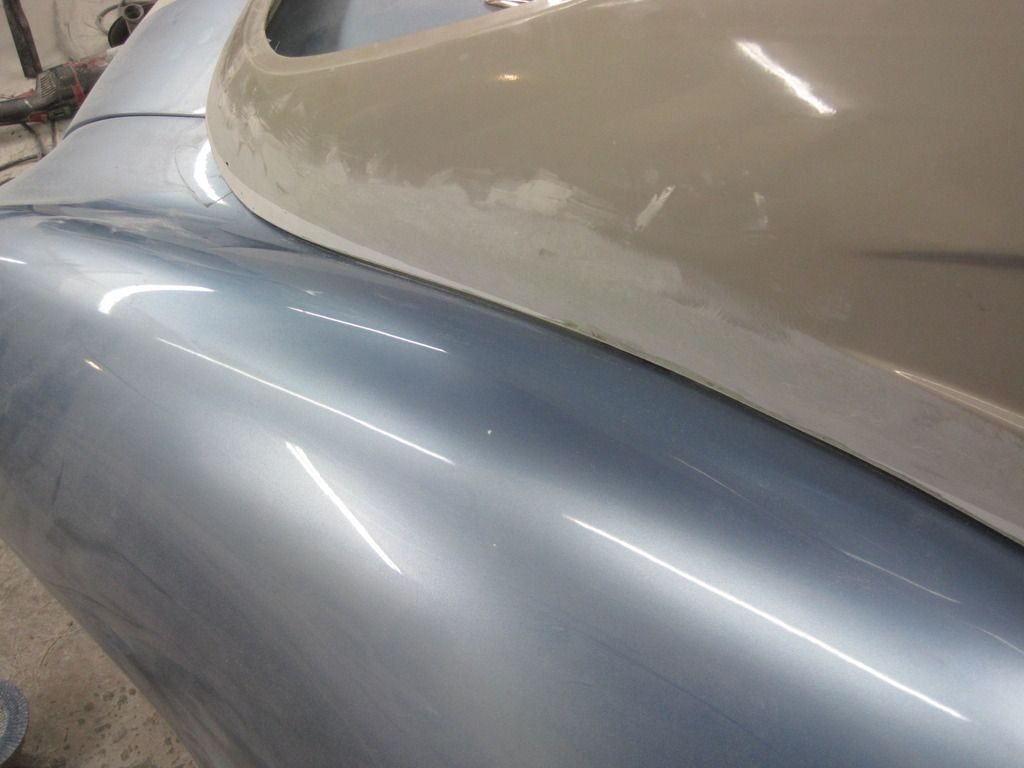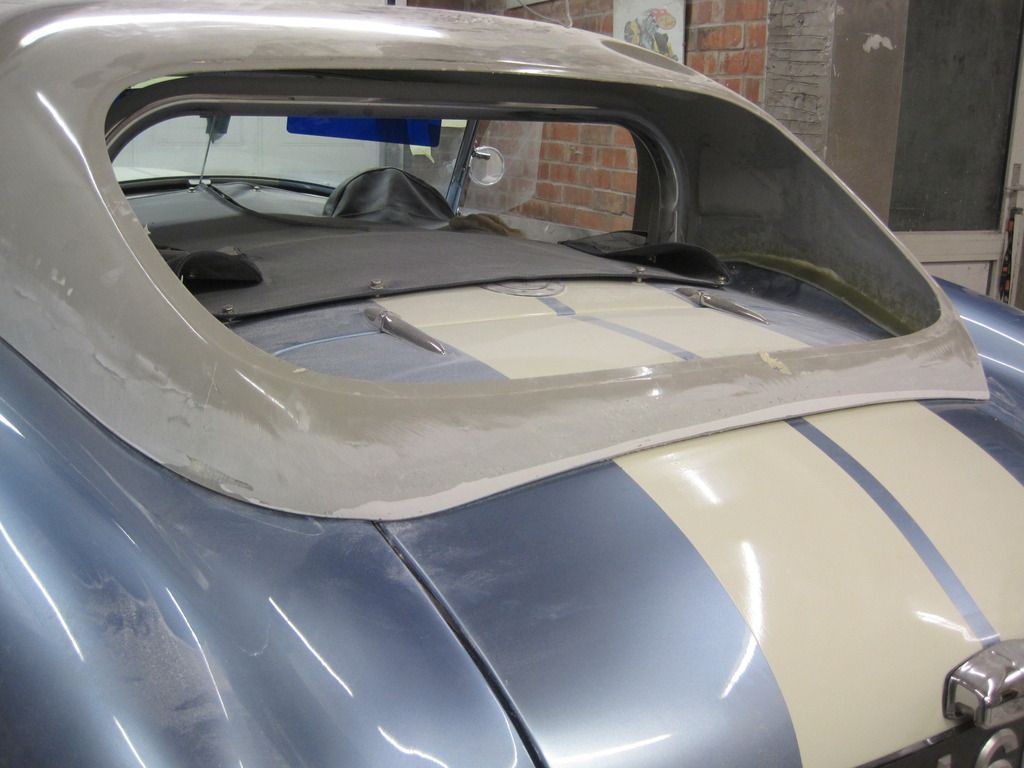It was raining again today so it meant we weren't going out anywhere as a family, which means it was it was "lets play with the Devils spawn", oh, I mean it was fibreglass time.
Having ground down the rest of the flange that was left inside the top, and also having ground down the stray bits of filler I ended up with this, a nice smooth area to fibreglass my new flange to. Here you can see the filler that was used previously to bridge the gap between the top and the body. The fact that it's thick on the outside gives me a nice flange and contour to work with
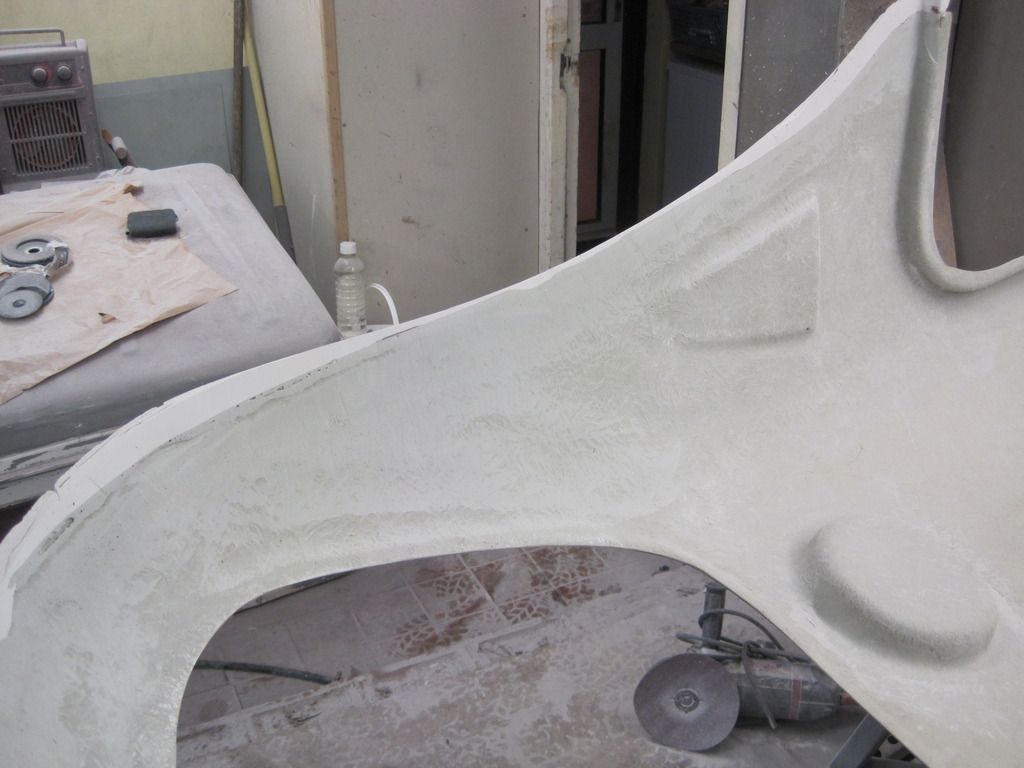
The car was then masked up. I used two layers of 2" tape where the roof was going to touch and then laid out a further three or four widths out from that. The rest of the car was covered with doubled up masking paper and cardboard to protect the surrounding areas

The roof was then placed back on the car, which allowed me to draw a line around the top to give me a guide as to where it was going to fit. The ink is visible through the fibreglass once it's wet, which helps to align everything
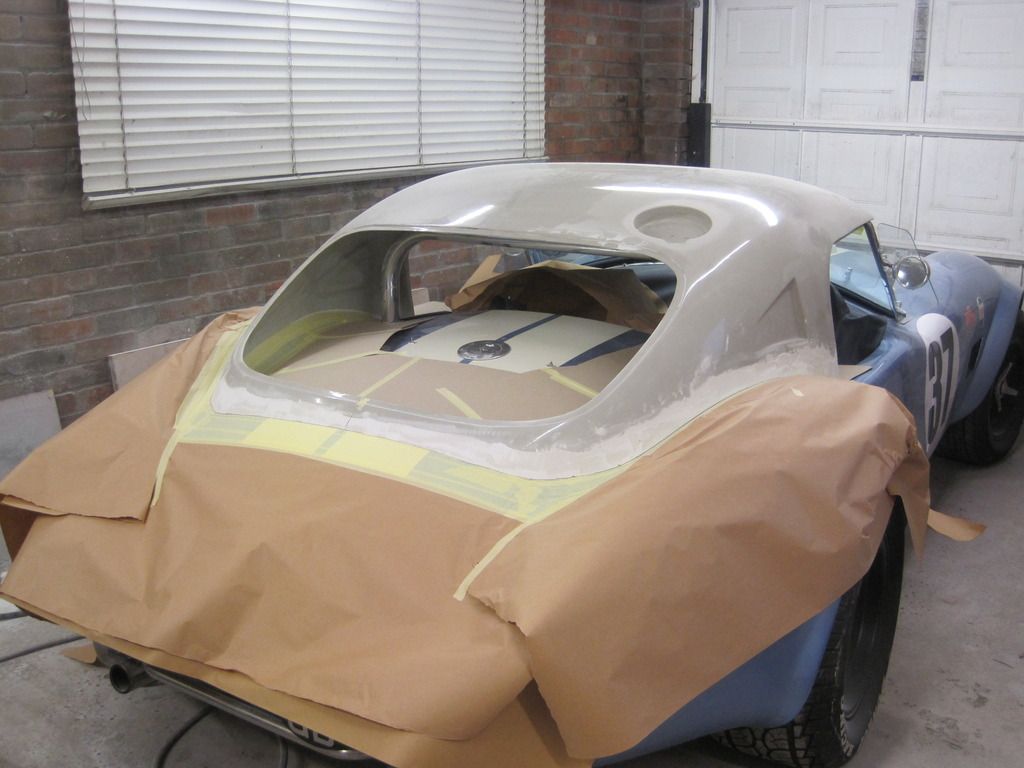
Doing this on my own, with no one free to help me lift the roof into place, I had to get inventive to enable me to fit the roof once the fibreglass was laid onto the body. I duct taped the front of the roof to the screen and then hung the back edge from the garage roof...Voila!!
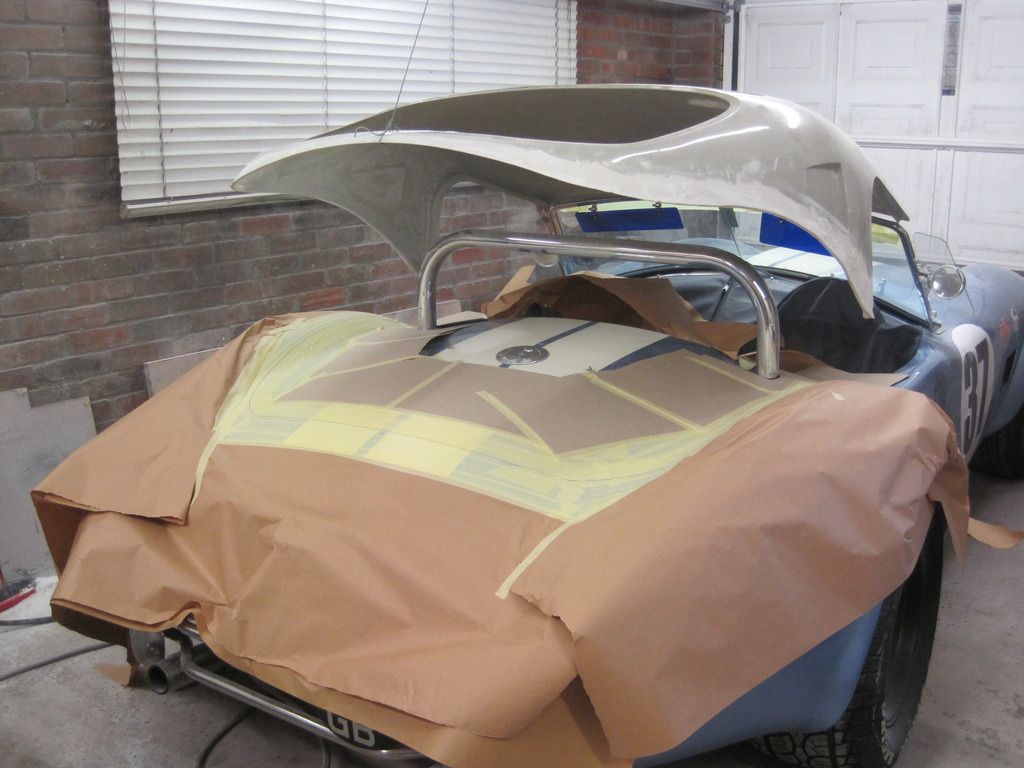
Two layers of fibreglass matt and resin were then applied to the body and then the roof was lowered into position using the ink outline I'd made earlier as a guide. The roof settled nicely into the wet resin, which in itself would give a good chemical bond. Once cured a layer of matt and resin were applied to the inside of the roof to join the new flange to the top itself. It's now sitting in the garage until tomorrow when I can seperate the roof from the body.
Here's the roof set in resin and matt
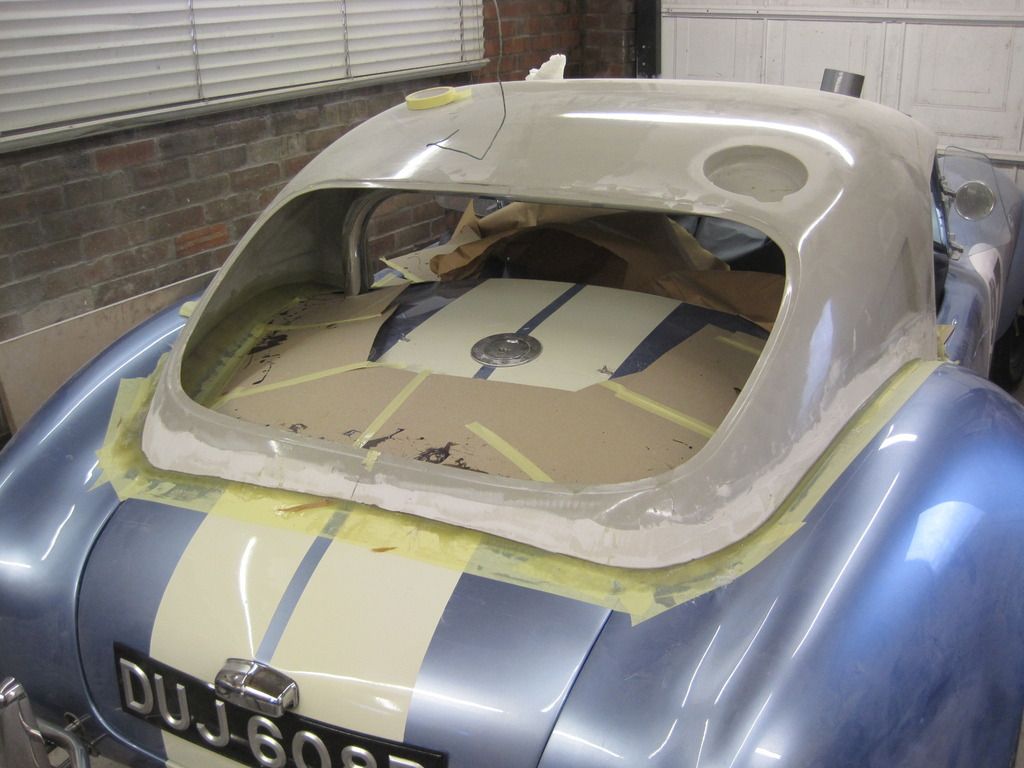
The inside flange 'glassed to the roof
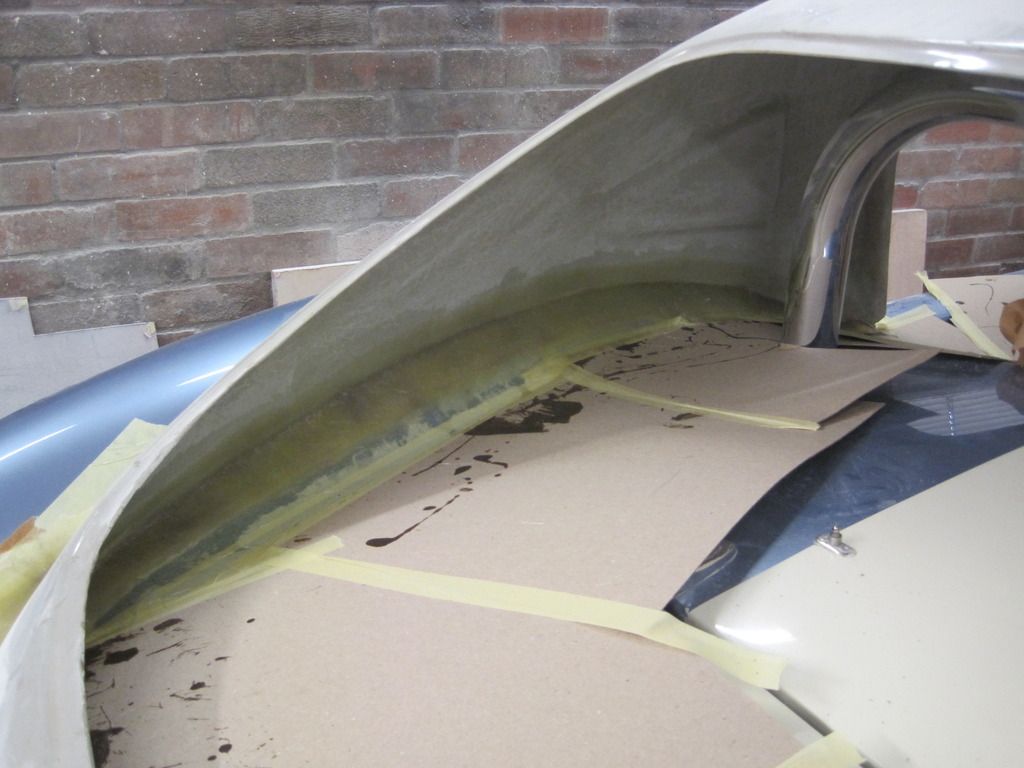
There are other ways that this whole procedure could be done, but I've found this to be a quick and simple way to modify "one offs". Ordinarily, you would take templates of the profiles of the tops of the rear 1/4 panels, then transfer this to sheet steel or aluminium and then rivet or screw these to the roof itself. You would then release wax, and spray on some PVA relaease agent, brush on gel coat, followed by fibreglass, then trim and remove the steel or ali templates, all of which is quite time consuming to get the profiles correct. Instead of this I just used filler take the shape, which only took about 10 minutes to do.
By the same token, the next stage would be to rub the area on the 1/4 panels that the fibreglass is going on to form the flange, with some release wax, and again some PVA release agent, followed by the fibreglassing as above. The problem with this is that the body is painted. Sometimes the fibreglass will not release "cleanly" from the body, and as such, could damage the paintwork. Instead, I used 2" tape as the "barrier" between the fibreglass and the paint/bodywork. Fibreglass will not stick strongly to the tape, which can simply be peeled off once the 'glass has cured. All I will need to do now is to sand down the excess filler on the outside of the roof and trim the flange to the desired size. I'll then use a foam/rubber seal stuck to the flange to protect the body once the top is fitted
cheers..Nige
EDIT One thing I forgot to say was that don't add too much catalyst to the resin as it will make the fibrglass get hot as it cures, which could be detrimental to the painted finish. I always err on the side of caution and add just enough catalyst to give a slow curing mix. If you try something similar at home, please don't blame me if there are any problems. The above is only a guide as to how I did it
